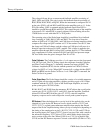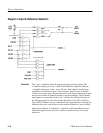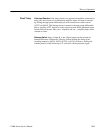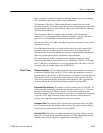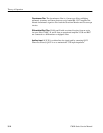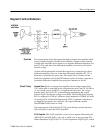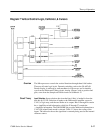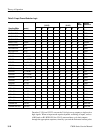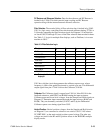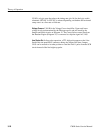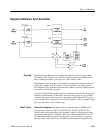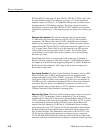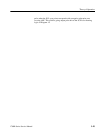
Theory of Operation
3–16
1780R-Series Service Manual
gives them five times greater transconductance. Current from U415B is switched
to the appropriate differential pair by U415A and U415D. The differential pair
that is off has a high impedance so that it does not affect the other pair. The
second input to the differential pairs is connected to the vertical position voltage.
R526 sets the balance between the output currents to center the X5 gain at the
0 IRE (300 mV for PAL) graticule line.
Readout. A differential amplifier made up of Q310 and Q312 switches in the
vertical component of the waveform display readout. During readout time, bias
current from U415B is steered by U415D to this differential pair. Readout Size
(R215) and Readout Position (R309) adjustments are provided.
Limiter. The signal current from the X1, X5, or Readout Amplifier drives the
Deflection Amplifier, Q628 and Q427, through cascode transistors Q625 and
Q425. The voltage excursion at the base of these transistors is limited by
transistors Q423 and Q626. If the voltage at either emitter falls low enough to
turn on the transistor, the additional current for this node is shunted to the
opposite side. The limiter threshold level is adjusted so that the Deflection
Amplifier will not saturate or cut off.
Deflection Amplifier. Q628 and Q427 are a differential pair that generate the
current for controlling the deflection voltage. Q630 and Q428 convert the
Differential Amplifier input transistors into Unity Gain Amplifiers. Most of the
signal current flows through Q630 and Q428 so that the little power in the input
Q628 and Q427 does not change their base emitter voltage and distort the signal
at its extremes. The signal current flowing through Q635 and Q433 drives the
CRT deflection plates. R540 supplies a current from the horizontal sweep for
active correction of CRT orthogonality errors (misalignment of the vertical and
horizontal deflection plates).



